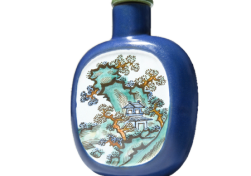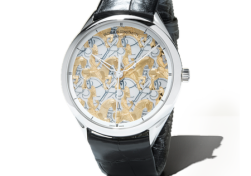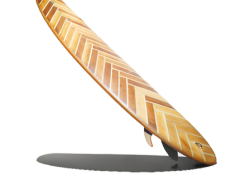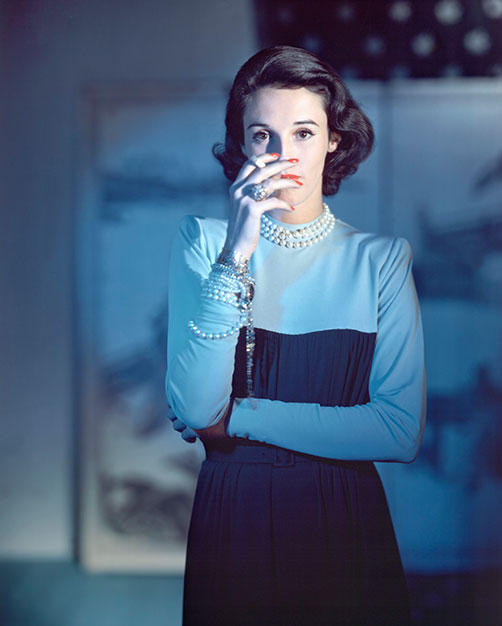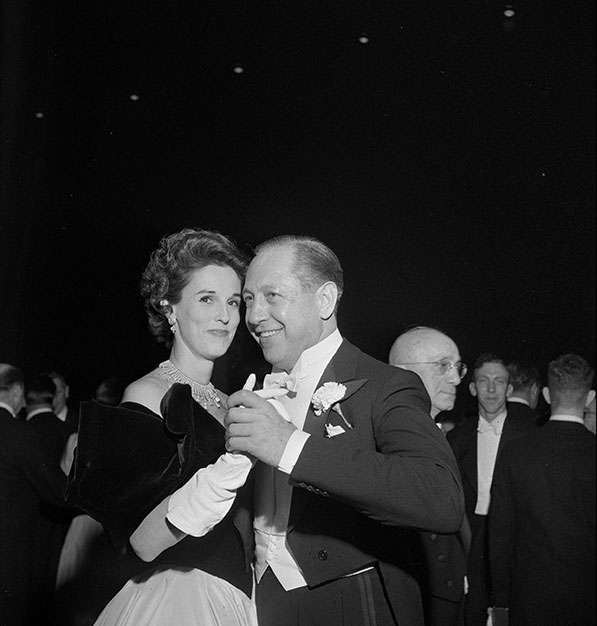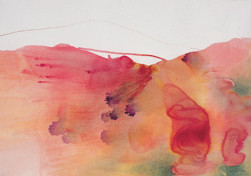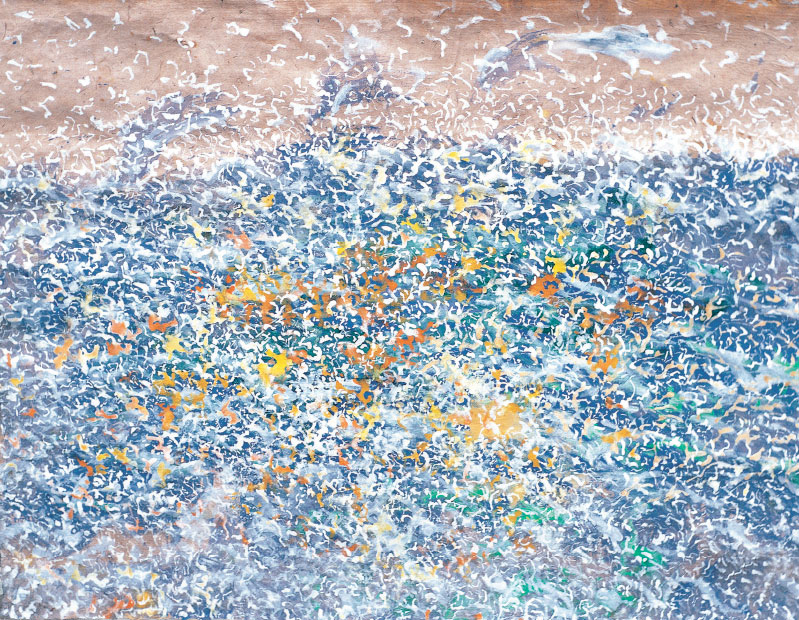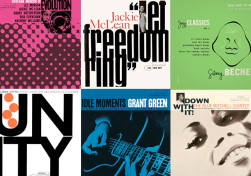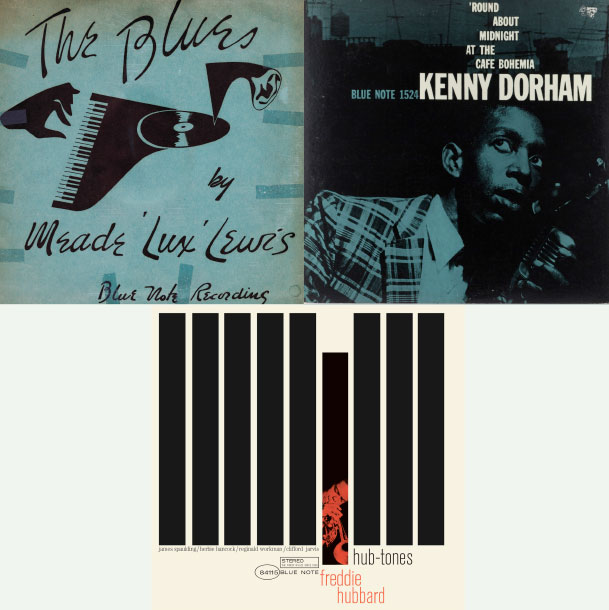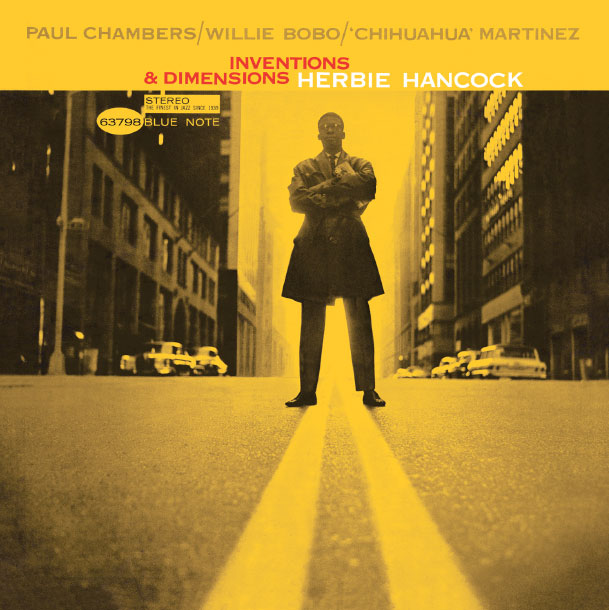Just as men today might compare watches or cars, in 17th-century China the object of desire was a snuff bottle. According to dealer Robert Hall, these miniature bottles were not just objects in which to carry powdered tobacco, but intricately embellished masterpieces, created for China’s elite. Snuff bottles only came to popularity in China because of a ban on smoking tobacco by the rulers of the Qing Dynasty. A bottle that was both portable and watertight became the ultimate vanity object, and exquisite models were created by master craftsmen in materials from porcelain, jade, ivory and coral to wood and glass. Today hundreds of the tiny treasures still make their way into collectors’ hands through organizations such as the Baltimore-based International Chinese Snuff Bottle Society. Their value, too, has soared. In 2010, Bonham’s received one of the biggest ever collections, of 1,700 bottles, which it valued at more than $47m, and in 2011, a bottle delicately painted with a Chinese landscape was sold for a record-breaking $4.17m. e-yaji.com; snuffbottle.com
While many horologists obsess about the movement and complications housed within a watch’s casing, for most watch-lovers, it is the look of a watch that matters most. Hence the trend in the past few years for watch manufacturers to invent increasingly decorative dials. Vacheron Constantin, the world’s oldest watch brand, has led the way by creating what are considered some of the most elaborate and intricate watches ever made. Each of its Métiers d’art collection is not just decorated with a different and highly complicated pattern, but layered with enamel, engraved by master craftsmen and then hand-painted by fine artists. Although the trend for decorative watches is gaining momentum, it dates back more than 500 years to when watches were made using mostly brass or copper and the dials enamelled to make them look more luxurious. In the 21st century, just as in the Middle Ages, designers have realized that, while complications are beloved by aficionados, the one thing no watch-lover can resist is a pretty face. vacheron-constantin.com
For those who didn’t know that wooden surfboards were having a moment, there is plenty of proof online. Such is the devotion of the natural board’s fans that there are now more than 120 websites dedicated to their manufacture. Once the means by which islanders would sail between atolls in the South Seas, wooden boards have become not just the most coveted of surfing equipment, but the most expensive. Master craftsman Roy Stuart recently made the ultimate luxury board, the $1.3m Rampant, its surface hand-painted in gold leaf and finely skimmed in Paulownia. This Asian wood was relatively unknown by surfboard makers until it was used in Australia in the 1980s by the American board-shaper Tom Wegener, who has subsequently become its greatest supporter. Not only is the Asian wood lighter than balsa, it is also more resistant to salt water than any other wood. Today, inspired by the ancient alaia boards in Hawaii’s Bishop Museum – often more than six feet long, finless and only half an inch thick – Wegener has created the finest, lightest waveriders ever created. driftwoodsurfboards.co.uk
Twentieth-century New York was full of fashion role models: high-society ladies whose wardrobes were as stylish as any European aristocrat’s, whose jewelry was priceless and whose elegance was the result of years of devoted attention. But none had quite the grace of Babe Paley.
Babe was the style icon of her day. The leader for a decade of the Ten Best Dressed list and an inductee into the Fashion Hall of Fame, she was a friend of and hostess to some of the most famous people in America. Babe was part of a circle alongside supposed wartime spy Gloria Guinness, actress and fashion designer C. Z. Guest, Hollywood socialite Slim Keith, Marella Agnelli, wife of Fiat chairman Gianni Agnelli, and Pamela Harriman, daughter-in-law of Winston Churchill and a future United States Ambassador to France. Truman Capote (a friend until he wrote an unflattering, minimally fictionalized exposé in 1975 that severed their bond) called these elegant women “the swans”, due to their propensity to group and glide through society like graceful birds.
What made Babe stand out from the rest of the swans was her compelling presence. As her friend, jewelry designer Kenneth Jay Lane, put it, Babe Paley, like the Mona Lisa, had a face that was both memorable and elusive. Eerily attractive and supremely charismatic, she was a product of a time when society figures were household names – and when women were schooled to be the epitome of elegance.
“One look from Babe and you melted,” Lane says. “You fell in love with her the moment her marvelous eyes looked at you. Every waiter in every restaurant fell in love with her. She made you feel that she was in love with you. If she walked into a room, people didn’t quite stop breathing altogether, but they held their breath for a minute. She had an aura.”
She also knew how to live in supreme style. After her marriage to CBS founder William S. Paley in 1947, she established an estate, Kiluna Farm, on Long Island, where the couple spent weekends and guests included the likes of Lucille Ball, Grace Kelly and David O. Selznick. In Manhattan they occupied a magnificent suite at The St. Regis, which Babe remodeled with the help of society decorator Billy Baldwin. “I was in my early twenties when I first saw their apartment at The St. Regis,” recalls Lane. “It was a corner suite, and it had been tented by Baldwin. There was a wonderful birdcage chandelier hanging in the middle of the drawing room.”
As David Grafton, who wrote the definitive biography of Babe and her family, The Sisters: The Lives and Times of the Fabulous Cushing Sisters, describes the apartment: “Using yard upon yard of Indian cotton… Babe transformed the space into an exotic fantasy.” Later, when she and her husband moved into their 20-room duplex at 820 Fifth Avenue, while still keeping her St. Regis suite, Baldwin “recreated their old St. Regis living room, which he had installed originally as a jewel-like library”.
Babe didn’t have to work her way up in society. She was born into it on July 15, 1915, to Harvey Cushing, a pioneering brain surgeon, and his wife Kate, a gracious but determined society hostess in Boston. As Grafton writes, “Early on, the Cushing sisters learned to entertain and cater to the comforts of an eclectic mix of personalities, many of whom were masters of their own medical or social fiefdoms.” The late Millicent Fenwick, a friend of Babe’s and a New Jersey congresswoman, remarked, “Each of the girls, and especially Babe, entered the world convinced that they were the most attractive young women in the world, combining beauty and brains.”
Barbara was the youngest of the five Cushing children – hence her nickname, Babe – and she and her sisters were groomed from the start to marry well, a goal that became a virtual profession for their mother. Kate proved instrumental in engineering the 1930 marriage of her first daughter Betsey to James Roosevelt, eldest son of Eleanor and Franklin Delano Roosevelt. Minnie would eventually marry Vincent Astor, Jr., who owned The St. Regis in New York.
In 1940 Babe married Stanley Grafton Mortimer, Jr., grandson of one of the founders of Standard Oil. She had been working at Vogue, less as a day-to-day line editor and more as one of the magazine’s legions of young, socially prominent women forging connections with designers of the day – the likes of Christian Dior, Coco Chanel and Cristobál Balenciaga. She was still at Vogue when the couple divorced in 1946, and she first met the significantly older, still-married Paley.
Their union in 1947 was, in some ways, unlikely, in that Paley, although powerful, was the son of Jewish immigrants – a detail that remained unsettling for Babe’s WASP mother at a time when such issues mattered among America’s elite. But with his intellect and contacts, and her social abilities, the couple became the hub around which high-society events revolved.
While powerful men need not be handsome or even charming, powerful women, especially in the mid-20th century, had to be beautiful. While Babe certainly possessed the beauty, she also had, as legendary interior designer Mario Buatta says, “substance and a sense of humor. I remember being at a client’s house for lunch one Sunday. Babe was at the table, about ten of us, and she was very quiet for some reason. But then she secretly put a piece of spinach on a front tooth. Finally, one of her friends at the table pointed it out to her. It got her the attention she wanted and it brought her into the conversation – a skill she never had any problems with.”
David Jannes, an art collector and former PR who handled some of New York’s most glittering society events, says, “You have to remember that Babe Paley and the women in her circle were true individuals. The society women of today don’t stand out in the way people like Babe Paley did. She dedicated her life to beauty – in her personal appearance, the objects she acquired, the people she surrounded herself with, the homes she made at The St. Regis and Fifth Avenue and elsewhere.”
The couple entertained CBS stars such as Edward R. Murrow, visiting dignitaries and politicians, and writers including Capote, who once famously said of his former friend, “Babe Paley had only one fault. She was perfect. Otherwise she was perfect.” Style was everything at their Fifth Avenue apartment. Sheets were ironed twice, once in the laundry, and once on the bed. Menus were archived to avoid serving the same meals to returning guests. Visitors complained of not being able to get into the bathroom because there were so many flowers. To cap it all, Paley had amassed a distinguished art collection, a centerpiece of which was Picasso’s Boy Leading a Horse (previously owned by Gertrude Stein, and which now hangs in the Museum of Modern Art, a gift from Mr. Paley).
Much has been written about Babe and Paley’s troubled marriage, both then and subsequently. Paley was devoted to Babe and keenly aware of the cachet she brought him, yet he was also a conspicuous womanizer. “Bill was Bill
and she knew it,” says Kenneth Jay Lane, who maintained a close friendship with Paley after Babe’s death. “She adored him. He was a fascinating man and much of her role was to make him happy.” Yet Capote, quoted in Gerald Clarke’s biography of the writer, said, “I never met anybody who was so desperately unhappy as she was… Once she tried to leave [Bill] and I sat down and said, ‘Look… Bill bought you. It’s as if he went down to Central Casting. Look upon being Mrs William S. Paley as a job, the best job in the world.”
Throughout her decades-long tenure as a society leader, the embodiment of high fashion, and a fundraiser for her favorite charities, Babe also occupied a role that could only have existed in her day. Certainly to fashionable women in New York, but also to those in the far reaches of America, Babe Paley was a recognized name, the exemplar of style and grace. Such was her power that one warm day, upon leaving a Manhattan restaurant, she removed her scarf and tied it to her purse. Paparazzi recorded the moment and “in no time, women throughout America were tying scarves to their handbags,” recalls Grafton. “So great was Babe Paley’s charisma that women of all ages and from every walk of life would do nearly anything to emulate her. They wanted not only to look like her but to be like her.”
Although Babe died in 1978, she is referenced for her style and look as if she were still attending parties and opening the door to her apartment to receive guests. “I think one of the reasons Babe endures is that she doesn’t look outdated. She looked like a modern-day woman even in the late ’40s and ’50s,” remarks Annette Tapert, who included a chapter about Babe in her iconic book, The Power of Style. “There’s also the fact that her name keeps getting passed down in style folklore. Young girls at fashion magazines today invoke her name.”
Poignantly, it was probably in part the pressures of maintaining the image of style icon and socialite supreme that created fissures in her marriage and contributed to her premature death. While Paley liked to see his wife project an image of impossible glamor, forever draped in furs and the most expensive jewelry, Babe’s love of fashion and design made her an early champion of the unconventional pantsuit. As she aged, rather than attempting to preserve an illusion of youth, she eschewed hair dye and presented her graying locks to the world.
Like many other women of her time, Babe also smoked two packs of cigarettes a day. Just a day before she entered a New York hospital to begin treatment for the lung cancer that would eventually lead to her death, she called her friend Kenneth Jay Lane, and invited him to meet for lunch. “She showed up wearing a long strand of big green beads,” he says. “I loved them. I said, ‘Babe, are those…’ and she said, ‘Yes.’ They were emeralds and I’d never seen the necklace before. ‘I haven’t worn this for years,’ she said, ‘but I knew you’d love them and I wanted to wear them for you.’ That’s the kind of person she was.”
Your address: The St. Regis New York
Images: Horst P. Horst © Condé Nast Archive/Corbis, CBS Photo Archive/Contributor, Erwin Blumenfel D © Condé Nast Archive/Corbis
One might have imagined that the postcard would have died a death in the internet age. But there’s a growing trend for cool types to send “retro” postcards, according to Katherine Hamilton-Smith, director of cultural services at the Lake County Discovery Museum in Chicago, which holds the Curt Teich Postcard Archives, the world’s largest public collection of postcards. Cards have become collectable: the work of John Hinde’s studio is highly sought after, as are works by historic postcard artists such as New York-born Ellen Clapsaddle and Australia’s Ida Outhwaite. Far from destroying the postcard, the internet has attempted to emulate its essence. The first
e-postcard site, The Electric Postcard, was created in 1994 at the MIT Media Lab, and since then apps such as Postcard on the Run and Postagram have been invented that convert messages into physical cards. But even with this innovative technology, old-fashioned postcards will never die out, says Hamilton-Smith. “They’re both
a tiny physical gift and a message; evidence that someone somewhere is thinking of you.” teicharchives.org
In his adopted homeland of Singapore, Tan Swie Hian is not just one of the most famous painters in the country, but one of Southeast Asia’s best-known poets. In 1993 a museum was built to house his masterpieces, and another – covering a square mile of wooded mountain range – is under construction in Qingdao, China. His works are carved into the rock faces of the Three Gorges on the Yangtse River, and painted onto sacred Buddhist sites. As a result, prices for his works have skyrocketed. When his 2013 Portrait of Bada Shanren was auctioned in Beijing last November, it fetched just over $3.3m – quite an achievement for a self-educated painter.
Yet it was for his poetry that the Indonesian-born artist first achieved recognition. Having completed a degree in English literature, he published a collection of poetry in 1968 entitled The Giant – today considered one of the region’s most important works of Modernist verse. His first brush with professional painting came when he took his first and only job, in the press office of the French embassy, where he was encouraged to contribute drawings to a Malaysian literary magazine. When the French ambassador officiated at his first exhibition in 1973, his second career
was launched.
It was at this time, too, that the artist had another awakening – of a spiritual kind. Tan had long been a practising Buddhist, and for a time considered giving up art in order to give himself fully to meditation. Thankfully, he didn’t, and he has subsequently won countless awards, from the Gold Medal at Salon des Artistes Français, Paris (1995) to the Crystal Award from the World Economic Forum (2003). In China, in particular, his work is collected avidly – hence the construction, begun in 2001, of The All-Wisdom Gardens in Qingdao, which is currently about one third complete, and where some 200 stonemasons are engaged in creating huge works of art under Tan’s direction.
What makes Tan different from other artists? What he’s trying to communicate, he says, is “love”. It is evident in whatever he does, whether calligraphy or paintings of trees, mountains, gardens and flowers, which he injects with a spiritual energy. “My aim is to create something that shows how a free mind functions,” he says. “It’s like a hummingbird flying forward, backward and sideways, soaring, swooping or hovering in midair.”
Tan Swie Hian Museum, 460 Sims Avenue, Singapore; tanswiehian.sg
Your address: The St. Regis Singapore
A Smile, 2008
“I made this piece to show how misfortune and happiness walk hand in hand in life,” says Tan. The painting includes a two-line couplet which reads: “The red lava flows, and a hundred flowers bloom. The acid rain pours, and a thousand birds fly”
A Sea Change, 1986
Much of Tan’s work also reflects his fascination with the practice of meditation. “One can meditate on the sea until the sea boils, rises to love you and weaves a celestial web of interconnected beings,” he says
A Holy Mountain, 2007
Tan’s devout Buddhism is evident in his continual celebration of the natural world. This painting was inspired by one of his own fables, called A Holy Firefly, about a firefly determined to attract countless other fireflies to a holy mountain. “When night fell, the whole mountain and its heart phosphoresced, visible as well to the shore beyond”
Just over a decade ago, the chandelier was languishing in design Siberia, deemed a fusty form of lighting that had no place in a chic modern interior. But no longer. In a quite remarkable reversal of fortune, today the chandelier is one of the most exciting, challenging and sexy objects in interior design, and big-name designers are creating dazzling chandeliers that are light years away from the traditional designs of the past.
One of the latest to create a sensation is architect Daniel Libeskind, who won the competition to design the masterplan of the World Trade Center reconstruction. Unveiled at last year’s Salone del Mobile, the trend-setting design fair held annually in Milan, his Ice chandelier fuses mathematics with the centuries-old craft of hand-blown glass. Commissioned for the Czech lighting company Lasvit, the chandelier features a series of clear-glass, angular pieces that fall like icicles from a reflective glass plate. Light shines through each glass piece, illuminating the edges to give the chandelier a shimmering, ice-like luminosity.
All of which is a far cry from the chandelier’s origins. The earliest chandeliers, in the 14th century, were simple wooden crosses with spikes for fixing candles to, raised to the ceilings of churches and monasteries by a rope or chain. Over the next two centuries the chandelier developed its more familiar shape, with arms to hold the candles, and moved from public buildings into private homes. Chandeliers in the houses of the prosperous were made of wood, wrought iron and tin. In wealthier residences, they were more finely crafted and fashioned from gilded bronze, known as ormolu, as well as brass. In palaces, precious metals, such as sterling silver, were used.
The creation of lead glass, or crystal, transformed the chandelier into an extravagant and glittering centerpiece. From the late 18th century onwards, hugely ornate chandeliers were found in the palaces of Europe and Asia. The Dolmabahçe Palace in Istanbul, built between 1843 and 1856, is dripping with chandeliers made by the French crystal company Baccarat, the most spectacular found in the Ceremonial Hall. A gift from Queen Victoria, it remains one of the largest chandeliers in the world, weighing 4.5 tons and featuring 750 lamps and hundreds of Bohemian crystals.
Today’s models are equally eye-catching – but very different in design. Take the Gabriel chandelier, for instance, designed by Studio Bouroullec for the palace of Versailles. Made to hang above the immense neoclassical Gabriel staircase that is the public entrance, the 40ft-long chandelier resembles an illuminated string of pearls hanging from the ceiling, the soft glow of the many crystal-encrusted LED bulbs changing with the daylight.
The Gabriel chandelier was made by Swarovski, the Austrian crystal-maker that has been at the forefront of the chandelier revival. Its Crystal Palace Project, launched in 2002 and curated by interior designer Ilse Crawford, had the ambitious goal of creating chandeliers with an aesthetic rooted in the 21st century rather than the 19th. The project got off to an inauspicious start. “At that time the classical chandelier was not taken seriously by the contemporary design set. Initially when I approached some well-known designers, most of them refused,” says Crawford. However, a posse of young designers took up the challenge, and their concepts were groundbreaking. One chandelier was made entirely of rose-pink crystals in the form of a haute-couture ball gown. Another was made of crystal prisms and resembled a glistening block of ice. Most unexpected was Tord Boontje’s Blossom, shaped like a flowering cherry-tree branch.
In the years since, many of the world’s most respected designers and even architects have realized the chandelier’s potential to thrill. “Manufacturers of chandeliers started to be interested in working with contemporary design rather than sticking to pastiche tradition,” says Crawford. The result has been some extraordinary creations. Award-winning architect Zaha Hadid’s limited-edition Fade, for example, incorporates 86 floor-to-ceiling cables, set at a 45-degree angle to create a fluted cone wrapped by 2,700 internally-lit crystals. Belgian designer Vincent Van Duysen’s Cascade is a series of LED-lit crystal strings that fall from the ceiling to resemble a torrent of water, while Beau McClellan’s Reflective Glow is officially the world’s largest chandelier. Suspended from a glass atrium between two office complexes in Qatar, it is 126ft long and lit by more than 2,300 hand-ground optical crystals and 55,000 LEDs.
Modern chandeliers also incorporate materials other than crystal into their design, such as copper piping and leather. Jo Whiting’s stunning chandelier for UK interior designer Abigail Ahern is made up of hundreds of small squares of porcelain, each of which has been hand-rolled in muslin for added texture. “Modern chandeliers evoke all the grandeur of the past, but have an edgy new update,” says Ahern.
No longer simply a light, the chandelier is now a work of art, too. “It is more fluid, more unique in design,” says Lisa Santana from Unitfive Design, responsible for the amazing rock chandeliers – 8,000 individually-made rock crystals suspended on hand-forged metal frames – at The St. Regis Bal Harbour Resort. “Now it’s possible to develop one-of-a-kind pieces that are a piece of art. They have become a reflection of one’s sense of style and fashion.”
Most recently, it is the development of the LED that has allowed greater scope. “LEDs flood the crystal with light, allowing it to do the talking,” says Billy Canning, chief lighting designer for the Irish crystal company Waterford. Although known for its traditional designs (its chandeliers are in London’s Westminster Abbey), Waterford stepped into the modern arena in dramatic fashion with a spectacular LED ball for the 100th anniversary of the annual Times Square Ball Drop on New Year’s Eve, 2007. The design of 672 Waterford crystal triangles lit by more than 9,500 LEDs made for a wonderful spectacle as it descended the flagpole.
However, even traditional chandeliers are enjoying a surge of interest as their star quality is once again appreciated. Baccarat’s Zenith 84 was also unveiled at Salone del Mobile, its glittering opulence a sharp contrast to the bare stone walls surrounding it. A reminder, if one were needed, that the chandelier has the power to transform even the most austere of spaces.
Your address: The St. Regis Bal Harbour Resort
In 1927, the year that The St. Regis hotel opened its new wing and ballroom on 55th Street, a Jewish-German teenager left his home in Berlin to try to find work in New York and to pursue his love of jazz. At first he lived rough in Central Park, walking by the grand hotel to find work in the city’s docks. By 1939 he had founded Blue Note Records, the most iconic jazz label in the world and the epitome of style and cool. His name was Alfred Lion.
The city in which he arrived had already become the jazz capital of the world. The first jazz record had been cut there just before the end of World War I,
and soon after dozens of venues had sprung up all over the city, from grand ballrooms to tiny spaces. Besides well-known spots such as the Cotton Club in Harlem, where Duke Ellington made his name, a thriving underground scene had evolved around 52nd Street, where musicians gathered to experiment with the form – and imbibe a drink or two – in the small, smoky interiors. It was here that Lion hung out.
When he wasn’t in clubs, Lion spent a great deal of time at Milt Gabler’s Commodore Music Shop on 52nd Street, talking to the owner and his brother-in-law, Jack Crystal (the father of comedian Billy Crystal), who worked at the shop and helped run gigs at a nearby club. Gabler not only sold records but had his own label, which in April 1939 would put out one of the most important political records ever made: Billie Holiday’s Strange Fruit, about the lynching of black men in the Southern states.
Alfred Lion’s new Blue Note label had released its first 78rpm disc a month earlier, and while it didn’t have the political resonance of Gabler’s release, it had arguably just as significant an impact. In the last days of 1938 Lion had gone to a landmark concert at Carnegie Hall, showcasing black music from spirituals to swing, and then had been a guest at the opening of Café Society, the first club in the city in which blacks and whites were treated as equals, greeted at the door with the words “Welcome to Café Society, the wrong place for the right people”. Having spoken to Gabler, he suddenly knew what he wanted to do: get boogie-woogie pianists Albert Ammons and Meade Lux Lewis to make some recordings.
In those days, very few records were pressed – and when they were, artists often weren’t paid. So when Lion spoke to the artists, and promised not only to pay them, but to pay them well, the deal was sealed. A studio was booked on the West Side of Manhattan, a bottle of whisky was procured, and Ammons and Lewis performed a series of solos and duets. At the end of the session Lion didn’t have enough money to cover both the studio time and his artists, and had to return some weeks later for the masters. When he listened to the discs back at his apartment, his life was changed: “I decided to go into the music business.” He pressed 25 copies each of BN1 and BN2, the former featuring two slow blues tunes, and the second two boogie-woogie numbers. With no distribution in place, he offered them by mail order at $1.50 each.
Over the next quarter of a century Blue Note Records not only became the leading jazz record label, but went on to release music by just about every great name in the genre, from Art Blakey and Thelonious Monk to John Coltrane, Herbie Hancock, Miles Davis, Sonny Rollins and Jimmy Smith. It also produced some of the most distinctive and beautiful covers in the business, with sleeves that were works of art in themselves. Lion’s boyhood friend Francis Wolff, also Jewish, whom Lion had helped to escape Germany in September 1939, took many of the mostly black and white photographs. The arresting graphics, with their echoes of the Bauhaus, were pioneered by Paul Bacon, who describes his early work as “graphic visions of the music. They were drawn by hand and represented the best I could do at the time with two colors.”
In 1954, Bacon was joined by another young designer, Reid Miles from Esquire magazine. While continuing to use Wolff’s portraiture, Miles placed a heavy emphasis on lettering and graphic marks, using stencils and woodblocks, which he intended to represent something of the rhythm and tone of the music. Ironically, given that Blue Note album sleeves have become the benchmark against which all album designs are measured, Miles was not a jazz fan. But he had a talent for reducing the feel of the music into a simple, modern design that reflected not only the revolution that was taking place in music, but in society. With their spare aesthetic, cropped photographs and glorious colors, even today, they look as fresh and revolutionary as they did then: the epitome of cool. And they were clever, too, reflecting Lion’s belief that jazz was an expressive medium to be taken as seriously as any other high art.
When swamped with work Reid Miles would farm out jobs to friends, including
a young Andy Warhol, then a struggling artist desperate for commissions. Warhol produced four album sleeves, three of which were for guitarist Kenny Burrell. Warhol would go on to create one of the most celebrated pop album covers of all time – the banana on the front of The Velvet Undergound and Nico – but his designs for Blue Note were not on par with those of Miles and Bacon.
The St. Regis New York is proud of its longstanding connection to jazz. Count Basie and Duke Ellington played at its historic rooftop ballroom, and celebrated modern-day exponent Jamie Cullum gave a private acoustic show at its King Cole Bar & Salon in October as part of the Jazz Legends at St. Regis series. Blue Note, too, has endured down the years and moved with the times, under the same guiding principle on which Lion established the company in 1939: allowing musicians the opportunity to make records with “uncompromising expression”. Robert Glasper, Gregory Porter, Derrick Hodge, Ambrose Akinmusire, Wayne Shorter and Jason Moran are just some of the names who record for Blue Note today and they, like just about everyone who has preceded them, make records that are the soundtrack to New York City. Records that define jazz in both their sound and in their look.
Uncompromising Expression: Blue Note: 75 Years of The Finest in Jazz by Richard Havers is published by Thames & Hudson and Chronicle Books; thamesandhudson.com; chroniclebooks.com
Your address: The St. Regis New York
Images: Francis Wolff © Mosaic Images, © 2015 Universal Music Group
What do you recollect of the scents of your childhood?
Although I’m absolutely in love with plants, I’ve actually always lived in apartments. But growing up in Mexico City I remember, when the elevator doors would open, always discovering a new flower arrangement that my mom had made. So the scent of flowers would always welcome me home.
How does your love of place and history connect to perfume?
More than any other sense, smell is linked to memory. As abstract and evanescent as a perfume can be, in our minds it is always tied to a concrete time and place. I’ve always been very connected to the discovery of a new city, a new landscape, through its aromas. With each of our scents, I want to guide you through a journey. That’s why it’s very important for me that the perfumes be “transparent”, that you are able to smell each ingredient so that you recognize them as clues in the story.
What was it like to train under Rodrigo Flores-Roux at Givaudan US?
When he discussed a specific note, or an historic perfume accord, he would set it up
in its period so I would understand the world around it. It was a cultural history
of perfume.
How would you describe your work?
I see myself as a fragrance architect: designing the scent so it highlights the significance of a beautiful story. I strive to be meticulous. The more of the picture I can paint for you, the more connection you will find with your life.
Your scents allude to historical events such as the meeting of Louis XIV
of France and María Teresa of Spain in 1660. What inspires you about
such moments?
History is my favorite subject. I read about the meeting of the French and Spanish courts in 1660 when the Peace Treaty of the Pyrenees was consolidated. For Fleur de Louis I investigated not only what they used as perfume, but also what they used to scent the room. The king’s cousin said that the pavilion where they met was so new that it still smelled of pine and varnishing tar.
What are the most exotic locations you have visited in your
perfume adventures?
Waiheke Island in New Zealand: it’s full of honeysuckle and jasmine. And Sydney is such a fragrant city – full of star jasmine in late spring, magnolias in the early summer, and frangipani later on. My favorite ingredients are gardenia, magnolia grandiflora, vanilla, lavender and rosemary, from Mexico, Australia, Spain and France.
You live in New York. What is the olfactory character of the Big Apple?
The waterways are definitely important. I love the Hudson for its sharp, briny scent.
And the aroma of home?
I like to buy fresh flowers and to change them depending on what’s in season, to experience a new scent. I also love burning candles. In the living room there will be a green floral (the St. Regis scent actually), in my bedroom something warmer, and in the bathroom something mossy and green.
What is the story behind the perfume you have created for St. Regis?
The ambient scent and candle are inspired by Mrs Astor’s ball, held at her Fifth Avenue home on January 29, 1900. Guests were greeted by the scent of American Beauty roses, the hostess’s favorite flower. They made their way down halls lined with potted palms and pillars of apple, quince and almond blossom. From there, they would enter a ballroom decorated with red roses, white lilies, yellow jonquils,
violets and carnations. Our scent is a custom composition that is historic, modern, truly signature.
Does perfume allow us access to something akin to a sixth sense?
Absolutely. Perfume can create a reaction almost like a vibration. It can excite, remind or attract you to something that’s beyond rational explanation.
Istanbul is crammed with colorful shops vying for attention. But the emporia that really snag the eye are those selling pyramids of gelatinous cubes in acidic greens, pinks and reds, dusted with icing sugar. More than mere candy, this Turkish Delight or lokum is a visual and toothsome feast, in a riot of flavors such as rosewater, cherry, orange and apricot, with delicious additions such as cinnamon, ginger and nuts. Today the sweet is also gaining respect from leading restaurants and shops around the world. Most notable is Zeynep Keyman’s Lokum Istanbul store, designed by interiors guru Anouska Hempel. Keyman aims to revive lokum in fashionable circles by placing it in chic boxes adorned with Ottoman Toile de Jouy and fez-like tassels. Basic lokum is made from water, sugar, a stiffening agent, floral ingredients such as rosewater, and flavors ranging from fig to pomegranate. One can see why C.S. Lewis, in The Chronicles of Narnia, chose Turkish delight as the White Witch’s lure for poor Edmund. It is the perfect perfumed temptation. lokumistanbul.com
